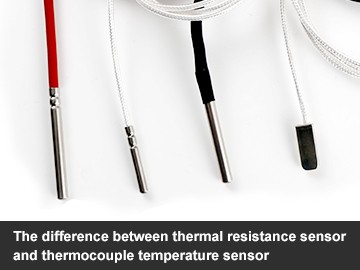The difference between thermal resistance sensor and thermocouple temperature sensor
With the increasing demand for home appliances, many appliance manufacturers will choose thermal resistance sensors or thermocouple temperature sensors depending on the price of products. In fact, this approach is not correct. Because the temperature measurement on the surface of the object is based on whether the object under test needs to be recorded, whether it needs high accuracy and the size of the temperature measuring element. If only from the point of view of controlling costs, we can not occupy the market for a long time.
On the one hand, we choose by the different temperature measurement principles of the overheating thermal resistance sensor and thermocouple temperature sensor. Thermal resistance temperature measurement is based on the property that the resistance of a metal conductor increases with the increase of temperature. It's main characteristics are high measurement accuracy and stable performance. Platinum thermal resistance is the most accurate measurement, which is not only widely used in industrial temperature measurement, but also made into a standard reference instrument. A thermocouple welds conductors or semiconductors A and B of two different materials to form A closed circuit. When there is A temperature difference between two points of conductor A and B, an electromotive force is generated between them and A large or small current is formed in the circuit. This phenomenon is called thermoelectric effect.
On the other hand, thermal resistance sensors and thermocouple temperature sensors has different temperature ranges. Thermal resistance belongs to negative pressure sensor, which is usually used in temperature measuring environment of -200~600℃, and platinum thermal resistance has the highest precision. Thermocouple is a positive pressure temperature sensor, and it's temperature measurement range is defined by international labels K, B, J type, etc. The temperature measurement range of K type is -40~1200℃, and that of B type is 0-1800℃. If there are special requirements, customized can be available.
This article analyzes the difference between thermal resistance sensor and thermocouple temperature sensor from different angles. What I want to express is that there is no distinction between high and low temperature sensors, and different temperature measuring environment and range are the important basis for choosing temperature sensors.






